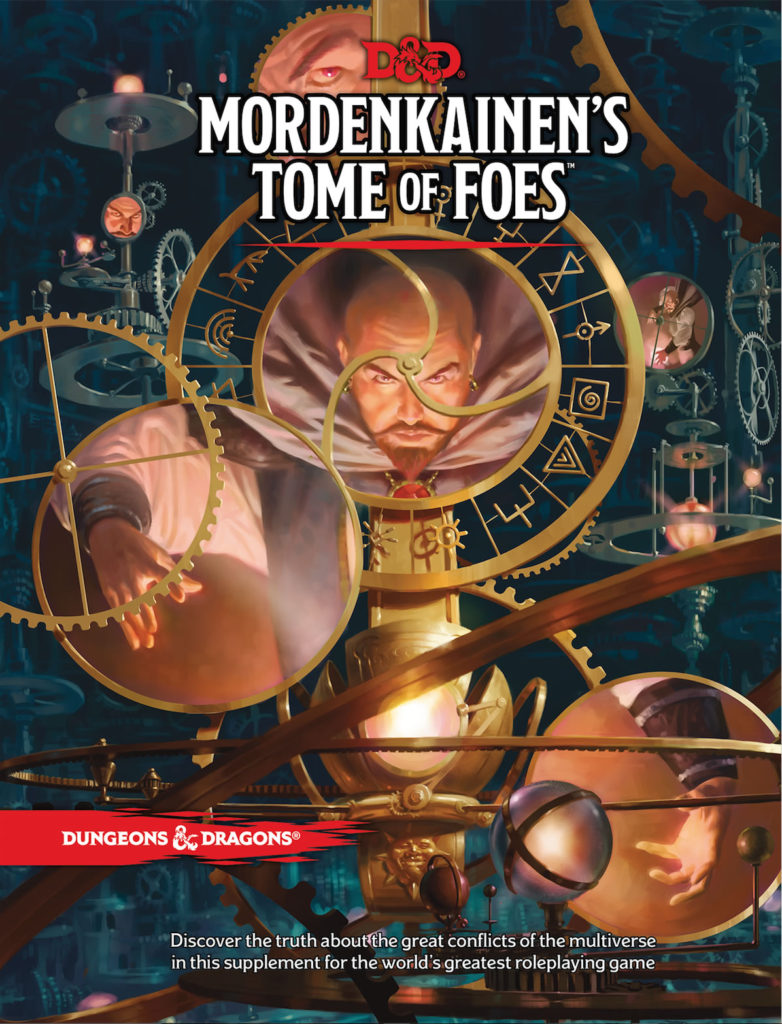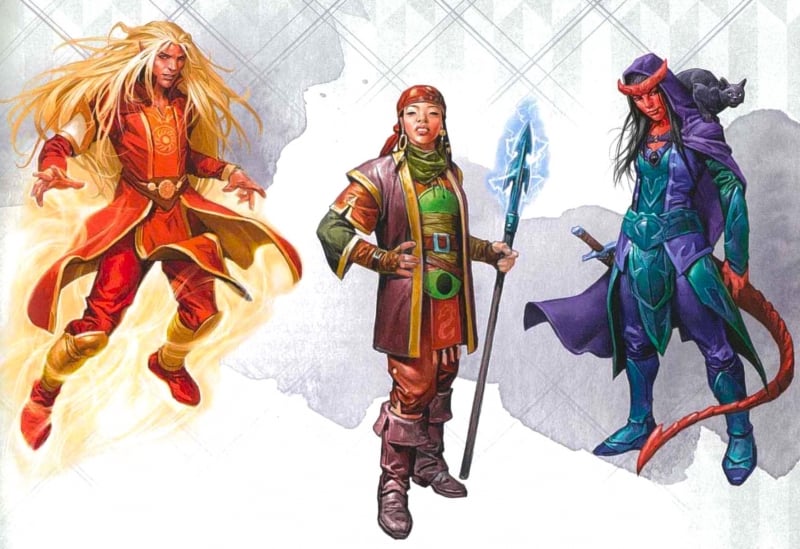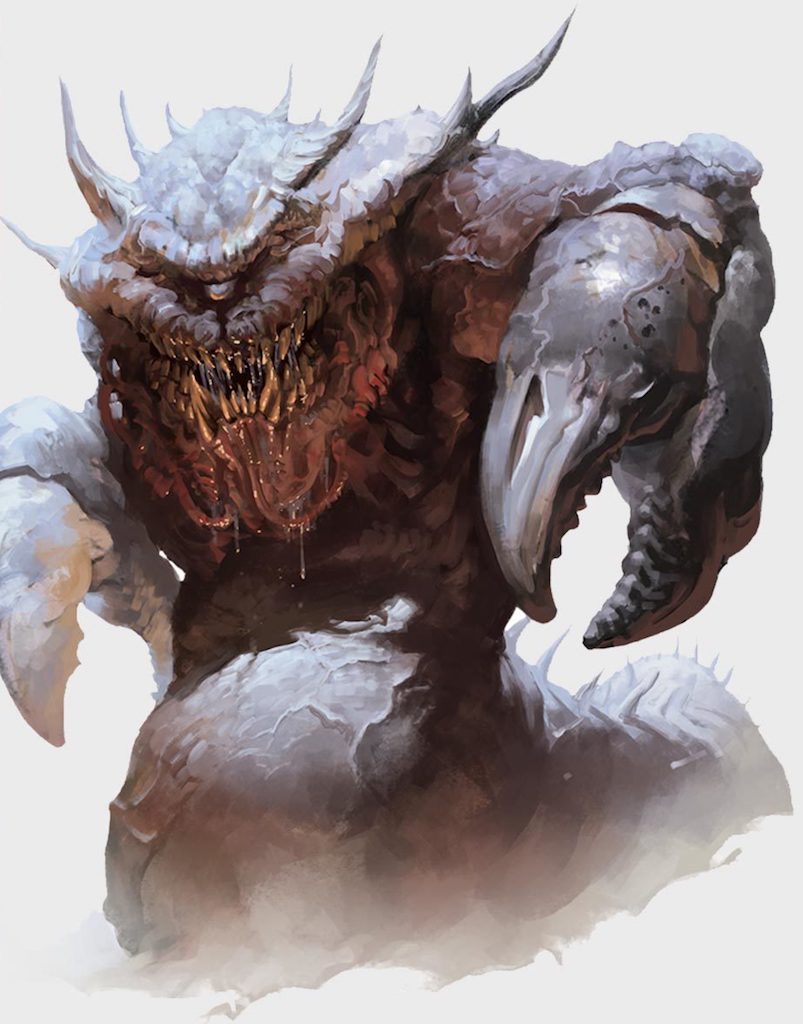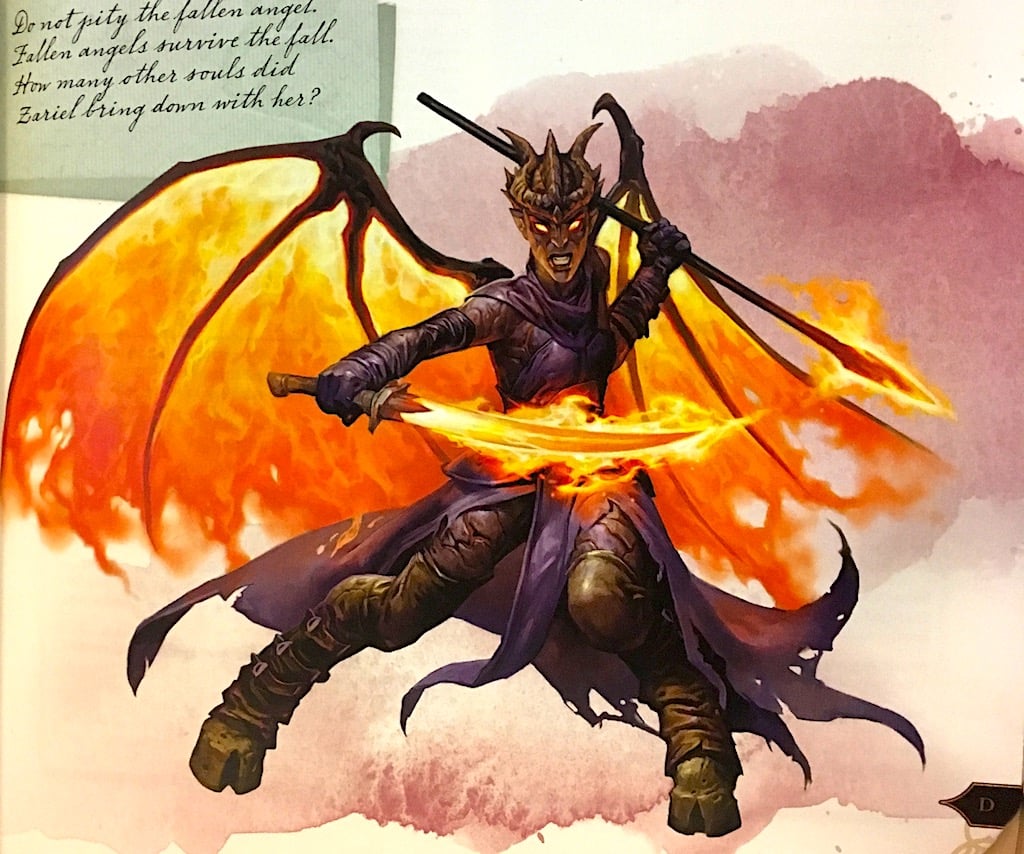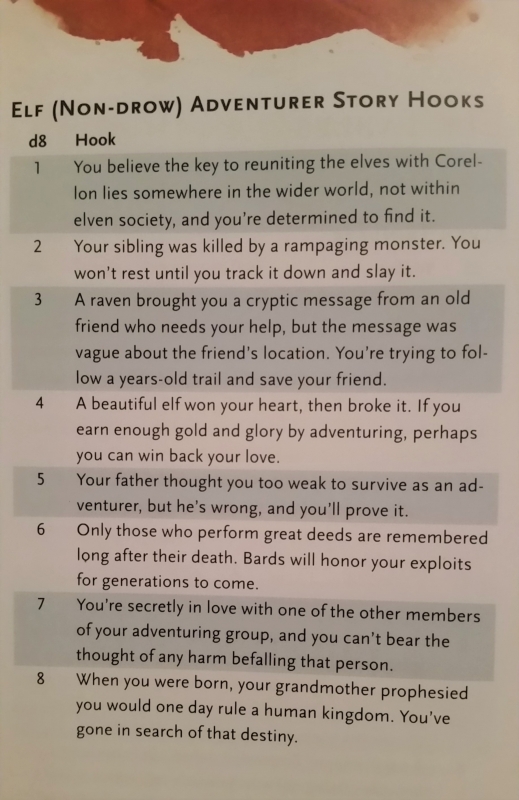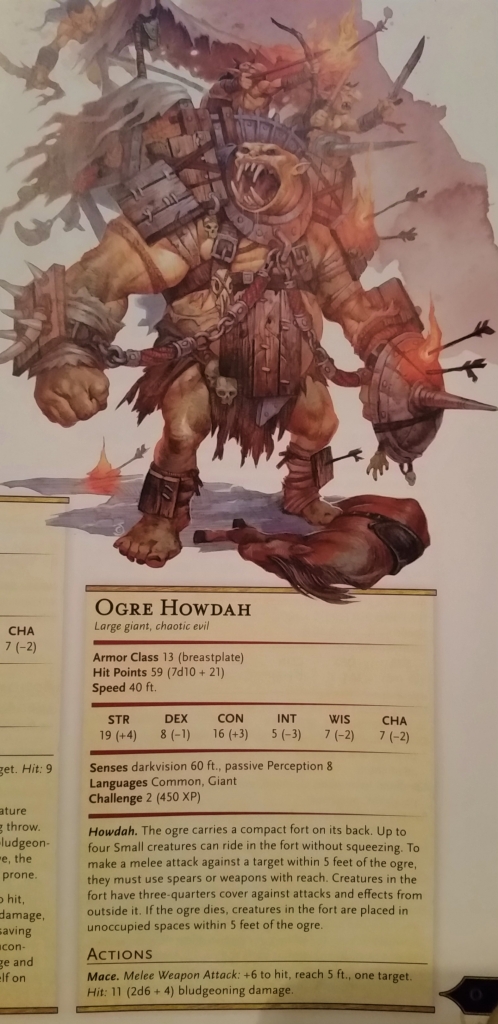D&D: Mordenkainen’s Tome of Foes – Review

Mordenkainen’s Tome of Foes is a tome of conflicts and monsters, of player options and powerful creatures to throw at your party, but perhaps most of all, it’s a tome of stories. Packed to the gills with monsters and ideas, it’s a book that invites adventure…
Alright, let’s talk Mordenkainen’s Tome of Foes. Following in the footsteps of both Volo’s and Xanathar’s Guides, Mordenkainen’s Tome of Foes takes many of the ideas presented in the books, and develops them further, giving us a supplement that’s as fun to read as it is to actually use in the game. It’s a book that expands the world and the narrative of D&D, giving both more complexity to mechanics and to the kinds of stories people using this book can tell.
The first half of the book is, like Volo’s Guide, mostly lore-based. It’s broken up into chapters that break the D&D world into big conflicts. After all, this is Mordenkainen’s book–with all the bias that you might expect from a Wizard who believes their cosmic duty is to place their thumbs on the scales of the cosmos to try and preserve Balance. As with the previous books, you’ll find annotated notes that reflect Mordenkainen’s opinion on things.
But you’ll also find a lot of story. Where Xanathar’s Guide was heavily rules-based, and Volo’s Guide was very Lore based, Mordenkainen’s Tome of Foes seems to have struck a decent balance (hah) between the two. You’ll get an entire chapter of lore–yes, but along with it, you’ll get the mechanics you need to represent that lore in your own game. Again, it’s the 5th Edition ideal honed to a razor’s edge here: Here’s an adventure idea, and here’s how you can represent this adventure in your own game.
Tome of Foes gives players and DMs alike the seeds for adventure, as well as the tools to plant them. Or maybe instructions for harvesting them? Look whatever the metaphor is, there were several points throughout the book where I sat down and started scribbling campaign notes.
That’s what Tome of Foes does best. And I think a big part of it is, it lays out a narrative framework for readers to explore. Look at the first five chapters and you’ll find conflicts that don’t have to define a campaign, but that add depth to the world–for players, most importantly. Tome of Foes has this interesting attitude towards players. It locates them in the world more.
Specifically–if Xanathar’s Guide was a focus on who the character is, Tome of Foes represents where they’re from. It gives you a lifeline into a larger story that makes your character feel like they’re actually from a society. And the devil (or demon, depending) is in the details. Through the framework of these conflicts, we get a better picture of what many of the player races (Elf, Dwarf, Halfling, Gnome, Tiefling–and new friends Duergar, Gith, and differenter Elves) have as background in general.
So if you’re playing an Elven Ranger, you can look through Tome of Foes and find a ton of information about playing an Elf. What makes an adventurer, and all the standard stuff, sure, but you also get the ancient history of the elves, including yheir fall from paradise, and if you’re a religious character, a ton of lore on the elven deities. And then once you’re read through all that, you can find some new subraces to play, or even just some new tables to help sow the seeds for new ideas.
And new races like the Gith come with a whole chapter that introduces them, sets them up in conflict with one another (both Githyanki and Githzerai are the same people, just taken in different directions), and they have a place that fills out the cosmos of D&D. The Githyanki live in the timeless Astral Plane and fly around on great astral ships (which are detailed within the book). While the Githzerai live in the ever-shifting chaos of Limbo, carving out a peaceful, ordered existence amid planar chaos.
And both of these add depth to the cosmos of D&D. Same with the Blood War–the world feels that much bigger because now you have details about the things and people in it. But what really makes the book are the monsters. I don’t want to spoil too much–because we’re going to be looking at how this book uses monsters in a later article, but Monsters are here to serve up both complex tactical challenges as well as cool story ideas.
They’re presented in groups that tell you a story–before you even pick up dice, as a DM when I’m flipping through the monster section and I come to the Elemental Myrmidons or the Ogre Howdah
We mention it in our video as well. Monsters are arranged in a way that gets you thinking about how to use them
And as we’ve mentioned before, there are a lot more higher-powered monsters in this book. You’ll find everything from monsters meant to serve as fodder to lieutenants and final boss type encounters. Mechanically the monsters feel like they’re getting a little more interesting–there are a number of combos in the game that can make it incredibly difficult for your player, and it’s rewarding to overcome that.
So all in all, BoLS recommends this book. There’s a lot going for it–if you’re looking for something that’s more Xanathar’s Guide in terms of expansion, though, you won’t find that here. But it has so many of the tools you need to get your game going tonight. So grab it if you can.
Come for the monsters, stay for the expanded Cosmos.

